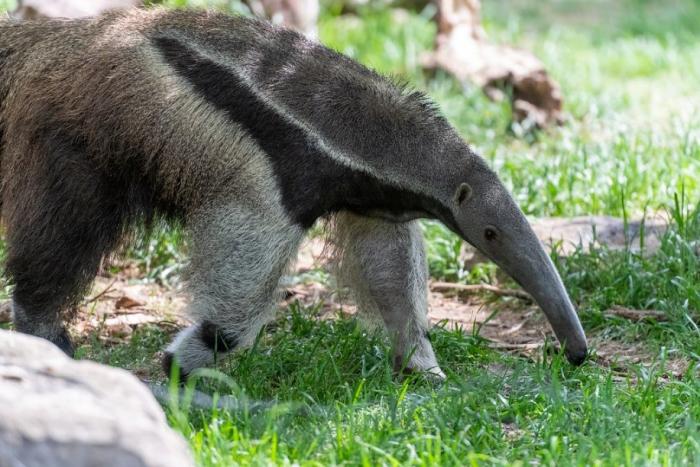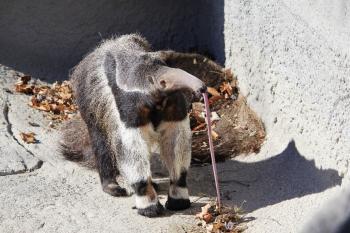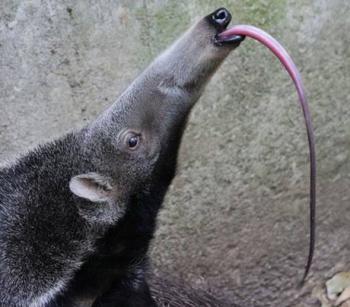
The anteater is a mammal that feeds primarily on ants and termites. In order to eat ants and termites, all anteaters have long snouts and thin tongues that can extend to a length longer than the length of the head! Their mouths are tube-shaped. Anteaters have lips but no teeth. Anteaters have large curved claws that are useful in tearing open ant and termite mounds.
Anteaters are part of the suborder Vermiligua, which means “worm tongue”. Anteaters are very unique animals. They were once thought to be related to aardvarks and pangolins because of their physical similarities to those animals, but scientists determined that they are not common ancestors but rather products of convergent evolution. Convergent evolution means that different species developed some of the same characteristics.
Anteaters are solitary animals. They are also territorial and tend to stay in their territories. Anteaters have poor eyesight but an excellent sense of smell. The combination of their keen sense of smell and long tongues help to make sure they never go hungry! Anteaters can pick up over 30,000 ants and termites with their tongue in a single day! Can you imagine eating 30,000 of anything in one day?
Anteater habitats include dry tropical forests (great for foraging for bugs!), rainforests, grasslands, and savannas. Anteaters can be found in Central and South America but you might be able to see one at your local zoo. Have you ever seen the anteater that lives at the Cleveland Metroparks Zoo?


- The anteater frequently appears in pre-Columbian myths and folktales.
- Giant anteaters gestate, or are pregnant, for 190 days and gestation ends with the birth of a single offspring, called a pup.
- Anteaters do not produce stomach acid and relies on the formic acid found in the bugs they eat to digest their food.
